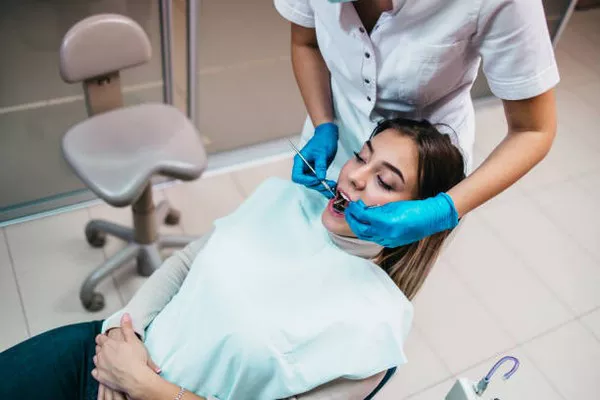When it comes to achieving a perfect smile, braces are a popular choice for individuals seeking to correct dental gaps and misaligned teeth. The process of closing these gaps through orthodontic treatment can be a significant decision. Patients often wonder, “How long do braces take to fill gaps?” In this comprehensive guide, we will explore the various factors that influence the duration of braces treatment and provide you with valuable insights into the timeframe for closing gaps.
The Initial Evaluation
The journey to a beautifully aligned smile begins with an initial evaluation by an orthodontist. During this appointment, your orthodontist will assess the extent of your dental gaps and create a customized treatment plan. Factors considered include the severity of the gaps, the alignment of your teeth, and the type of braces you choose.
a. Severity of Gaps
The severity of your dental gaps plays a crucial role in determining the duration of your braces treatment. Minor gaps may close relatively quickly, while larger gaps may take more time to correct.
b. Type of Braces
The type of braces you opt for also affects the treatment timeline. Traditional metal braces, ceramic braces, and Invisalign each have their unique advantages and may impact the speed at which your gaps close.
Treatment Techniques
Braces work by applying continuous pressure on your teeth, gradually moving them into their desired positions. Understanding the mechanics behind this process can help answer the question, “How long do braces take to fill gaps?”
a. Tooth Movement
Orthodontic treatment is a delicate process. Teeth that need significant movement may require more time to close gaps. The movement of teeth is carefully controlled to ensure the best possible results.
b. Adjustments
Regular adjustments are necessary to keep the pressure on your teeth consistent. These adjustments are typically scheduled every 4-6 weeks, and your orthodontist will make any necessary changes to ensure progress.
Patient Compliance
Patient cooperation is a vital component of successful orthodontic treatment. Adhering to your orthodontist’s instructions can significantly influence the duration of your treatment.
a. Oral Hygiene
Maintaining excellent oral hygiene is crucial during braces treatment. Proper brushing, flossing, and cleaning around the braces can prevent complications that may prolong the treatment time.
b. Diet Restrictions
Following dietary restrictions, such as avoiding hard or sticky foods, is essential. Eating foods that can damage your braces may lead to setbacks in your treatment.
Age and Growth
The age of the patient can also affect the duration of braces treatment. Adolescents and adults may experience different treatment timelines.
a. Adolescents
Younger patients often respond more quickly to orthodontic treatment due to their still-developing jawbones and teeth. The bones are more malleable, making it easier to move teeth into place.
b. Adults
Adults may experience a longer treatment timeline because their bone density is fully developed. However, advancements in orthodontic technology have made it possible for adults to achieve great results.
Dental Gaps Resolution Timeframe
The time it takes to close dental gaps varies from person to person. On average, most people can expect to wear braces for 18 to 24 months. However, this timeframe can be shorter or longer based on the individual’s unique circumstances.
a. Minor Gaps
For patients with minor gaps, the treatment duration may be as short as 6 to 12 months. These cases typically require less tooth movement and are often associated with less discomfort.
b. Moderate to Severe Gaps
Patients with moderate to severe gaps may need braces for 24 months or more. It’s important to remember that the goal is not just to close the gaps but also to ensure a stable and lasting result.
Monitoring Progress
Regular check-ups with your orthodontist are crucial to monitor the progress of your braces treatment. During these visits, your orthodontist will assess your teeth’ movement and make any necessary adjustments to your treatment plan.
a. X-rays and Imaging
Orthodontists use X-rays and imaging to track the movement of your teeth and the closing of gaps. This allows for precise adjustments, ensuring optimal results.
b. Mid-Treatment Adjustments
If your orthodontist notices that your teeth are not moving as expected, they may make mid-treatment adjustments to expedite the closing of gaps.
Conclusion
In the quest for a flawless smile, braces are a reliable and effective solution for closing dental gaps. While the timeframe for braces treatment varies based on individual factors, including gap severity, age, and patient compliance, rest assured that the end result is well worth the investment of time and effort. By working closely with your orthodontist and following their guidance, you can achieve the smile you’ve always dreamed of. So, if you’re asking, “How long do braces take to fill gaps?” remember that the journey to a stunning smile is a carefully planned process that ensures lasting results.
Related Links:
What should i avoid after dental implants?
What to Do if dental implant screw falls out?
How long Does swelling last after dental implant surgery?




























